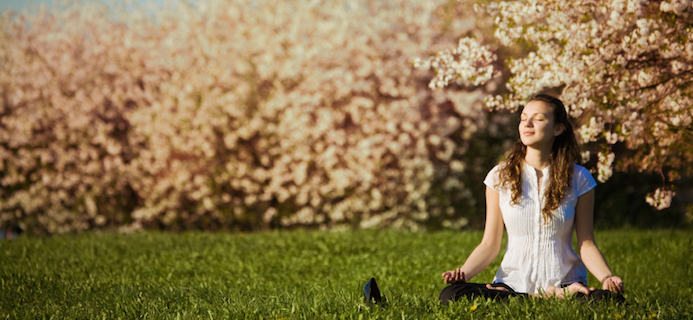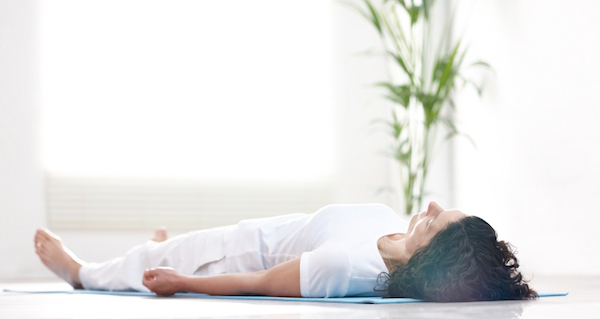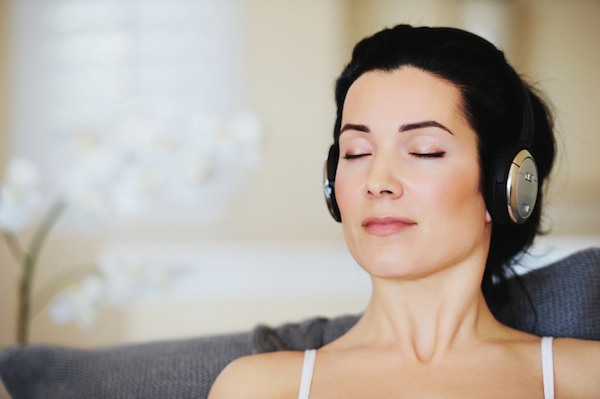Welcome to the final week in our how to meditate for beginners series with Charlotte Watts. Plus, find out how you can win a copy of Charlotte’s new book the The De-Stress Effect
In the final instalment of this four part series, we explore the ultimate intention of a meditation practice – to foster awareness with compassion – and how to keep it up. This is so that you can cultivate time spent alone with your own experience and inner landscape, where you can feel the freedom to simply watch everything arise and begin to let it go.
The guided meditations I’ve been supplying here are great as a route to draw you in and help you become accustomed to being still and present, but to just be with ourselves, even for a few minutes a day, can greatly improve how we handle life, meet other people and treat ourselves. This week’s meditation focusses on loving-kindness, so that you always have somewhere to come back to when you need to nourish your ability to find empathy for yourself and others. This is the root to finding a practice that weaves easily into your life – because it improves your daily life.
The basis of meditation isn’t pushing away thoughts but acknowledging them without getting involved or following stories that arise
Making meditation a habit
Initially meditation can seem more difficult, as with learning any new skill, it takes practice. By now though, you will have been forming the new neural pathways that mean your brain has got into the groove of this new habit. When we reach this point, this is where we can truly start to acknowledge that some days meditation will seem to flow and some days it will feel positively sticky or uncomfortable, but we know deeply that it always benefits us.
To simply allow ourselves to be, is where we can find an awareness that enables us to feel really truthful about the decisions, actions and relationships we create in life. This awareness needs to be held with compassion, so it’s not just vigilance, but a feeling of being awake and kind within both our inner and outer worlds.

Not needing to get anywhere or achieve anything
Meditation is one of the few things in our box-ticking lives where we are definitely not trying to reach a particular outcome or achieve anything specific at all. That can be difficult to wrap our heads around and of course the point is, to give up trying to let the head make sense of it at all. When we meditate by ourselves, the lack of words to listen to can prompt our brains to supply its own, but rather than push thoughts away, you can use the following guidance from The De-Stress Effect to help remind you to come back to your breath, body and experience over and over again.
6 ways to deal with thoughts and feelings as they arise in meditation
1. Cultivate non-reaction The basis of meditation isn’t pushing away thoughts but acknowledging them without getting involved or following stories that arise. This helps us to simply step to one side, become the observer and nurture non-attachment and not let individual thoughts become larger stories in our minds.
Cultivating non-judgment is the absolute key to keeping up a practice that will serve you well for many years to come
2. We’ll always wander away from the present – it’s our nature Ruminating on the past or projecting into the future is where we go when we aren’t in the present moment. It’s an ingrained human habit to follow thoughts, feelings (thoughts about a feeling), dilemmas, worries etc. Watch tendencies for self-doubt, anger, resentment, restlessness and boredom that steal you away from the here and now. These hindrances are natural: let them all come and let them all go.
3. Self-compassion and patience create the anchor or grounding that we need to foster awareness A useful phrase (from the wonderful yoga teacher Judith Lasater) to say to yourself is ‘how human of me to get distracted/tell myself off/get bored’. That helps us to let go and not create criticism from noticing our tendencies. Everyone has these challenges – you aren’t alone and are no worse (or better) than anyone else.
4. Practise gratitude by thanking the chattering mind monkey voices for looking out for you and invite them to calm through your breath.
5. This is both simple and complicated Don’t judge your practice, it is what it is and it will always differ – some days it will be an easy flow, some days it will feel like wading through treacle or like you’re in the trenches.
6. When we meditate and in life generally, acceptance is the route to being with any nature of feeling that arises This isn’t putting up with things we shouldn’t, but rather easing off energy wasted on fight and turmoil to accept that trying to control things keeps us from living with ease.
3 steps to keeping up a regular meditation practice
1. Just show up! Our wonderfully creative and productive brains can come up with all measure of reasons to not sit down to practice. All of those things to do, preoccupations or negative coping patterns like TV or online shopping can offer great ways out from the trickier pursuit of doing nothing. Even if it’s just 5-10 minutes a day, the practicesof discipline and consistency are positive intentions for your brain and being.

2. Don’t judge yourself Cultivating non-judgment is the absolute key to keeping up a practice that will serve you well for many years to come. You can choose to expend energy towards that inner critic (would you talk to a friend like that?) or you can accept that those voices are not true and practice offering self-empathy. If this is difficult for you, come back to this week’s loving-kindness meditation often to increase your self-compassion capacity; then you’ll find you are more open to simply letting things unfold as they will…..
3. Practice! Use the guided meditations in this series to come back to whenever you need a bridge back into practice, if a busy brain or stress means it feels difficult to just sit by yourself or as starting points for a longer meditation. For instance, it can be useful to start with the week 1 or 2 shorter practices and then set a timer for a total 15 or 20 minutes, so you can continue with silence after, once the guidance has helped you to drop in and connect.
Week 4 20 minute Guided Meditation audio: Loving Kindness
In this twenty minute practice we explore Metta Bhavana, the Buddhist meditation of metta (loving-kindness) bhavana (development). There is much research to show that this ancient practice of compassion – to ourselves and others – can increase resilience and reduce stress levels.
We hope you enjoyed this series and have a long and it has helped create a connection to meditation.
MORE: week 1 – How to meditate for beginners: practice positions and advice on frequency
week 3 – Different meditation methods
Read more posts by Calmista, Charlotte Watts

to giveaway. to enter is simple: share this post on Facebook or Twitter and you’re in with a chance!

Like this article? Sign up to our newsletter to get more articles like this delivered straight to your inbox.























































